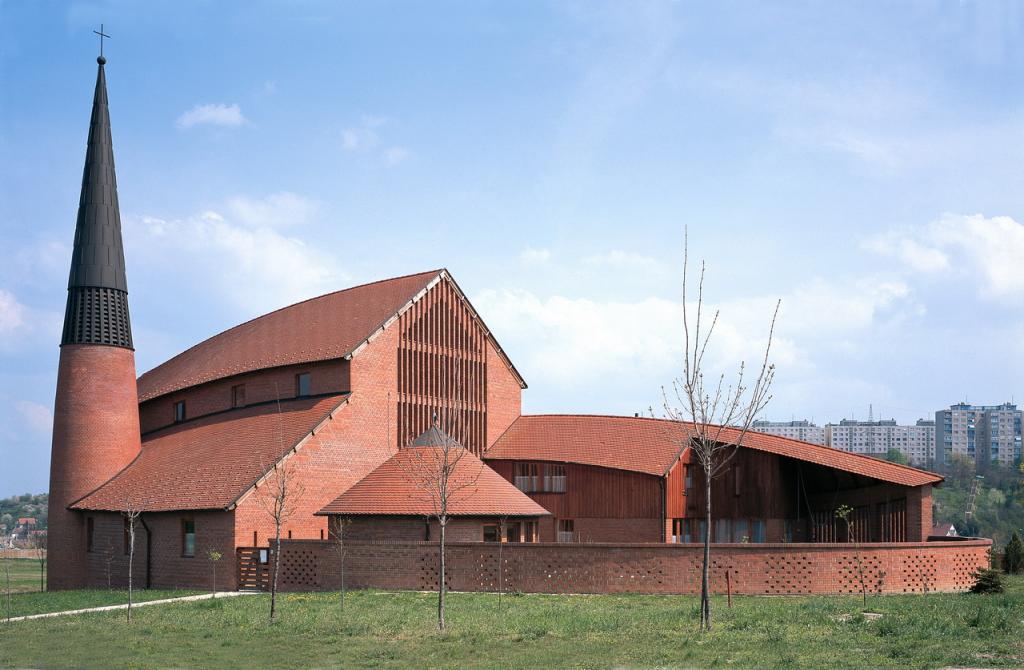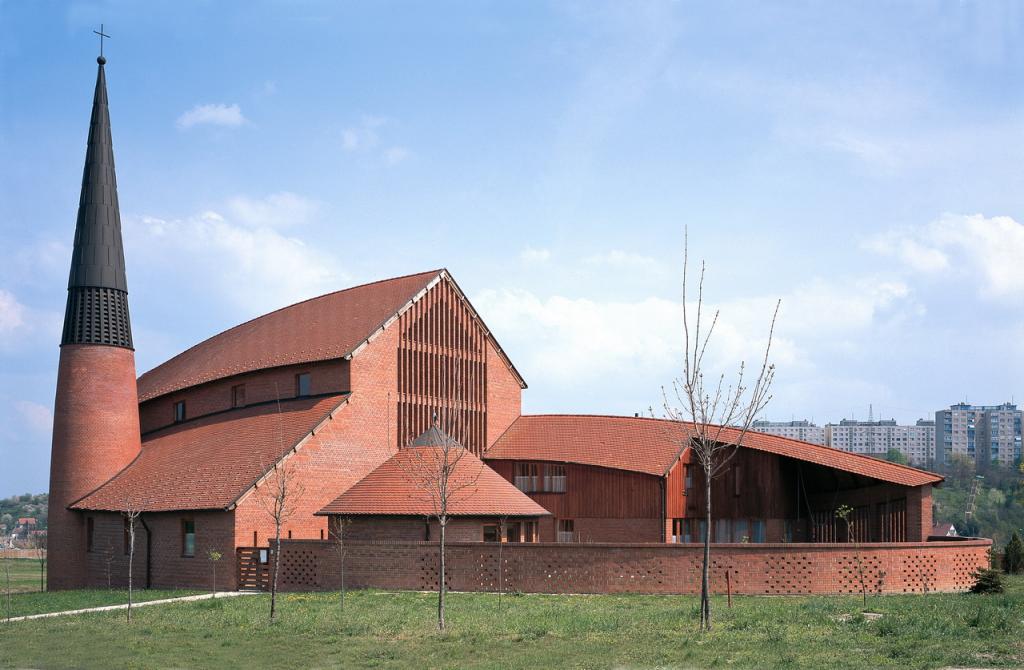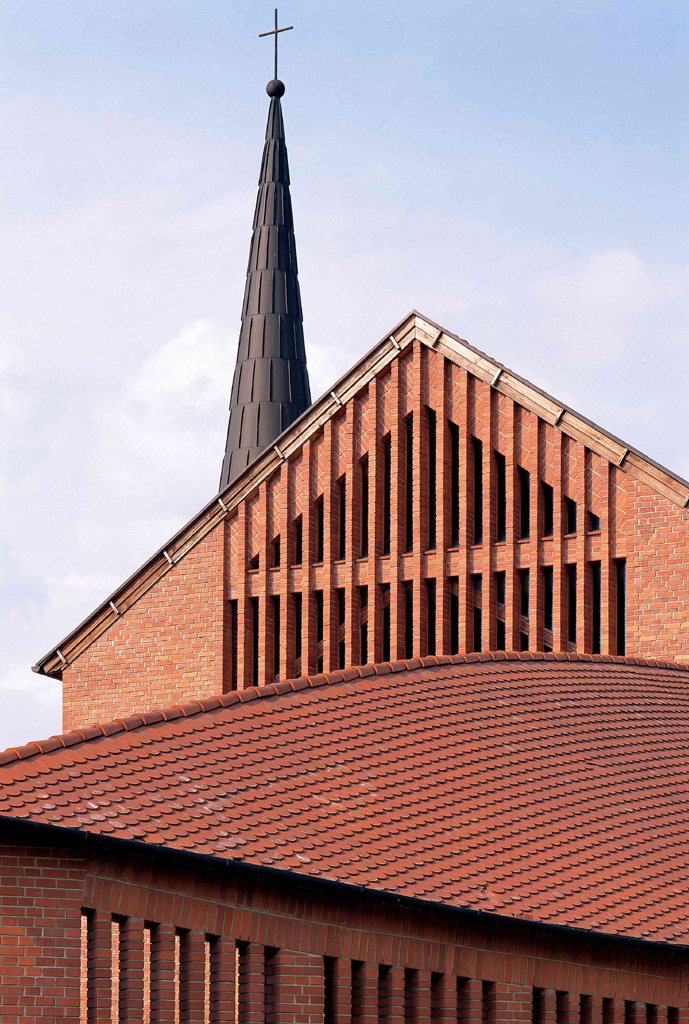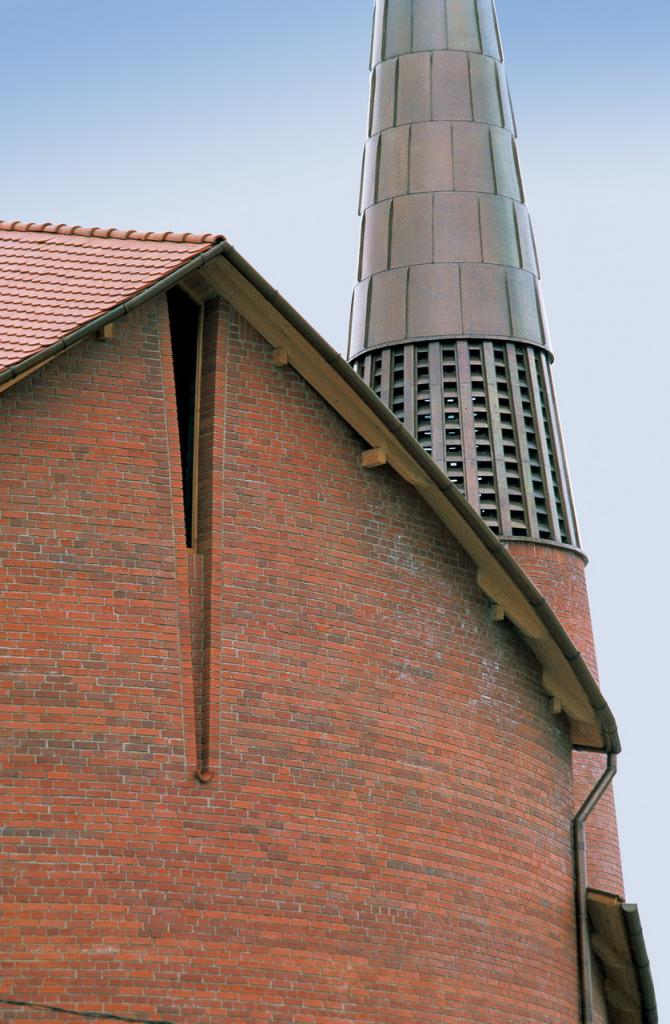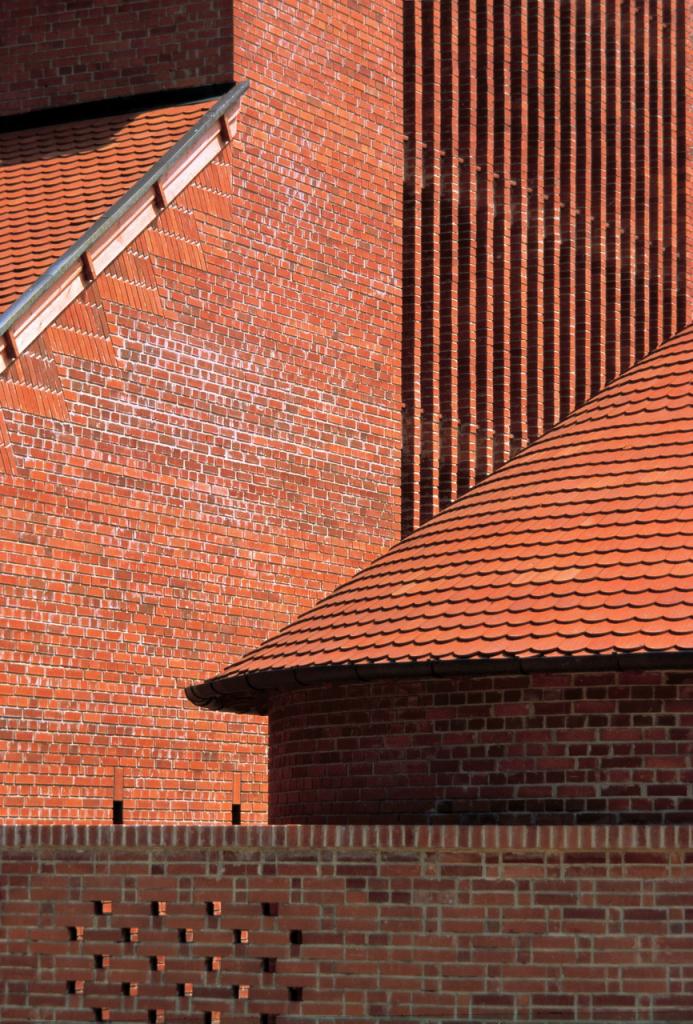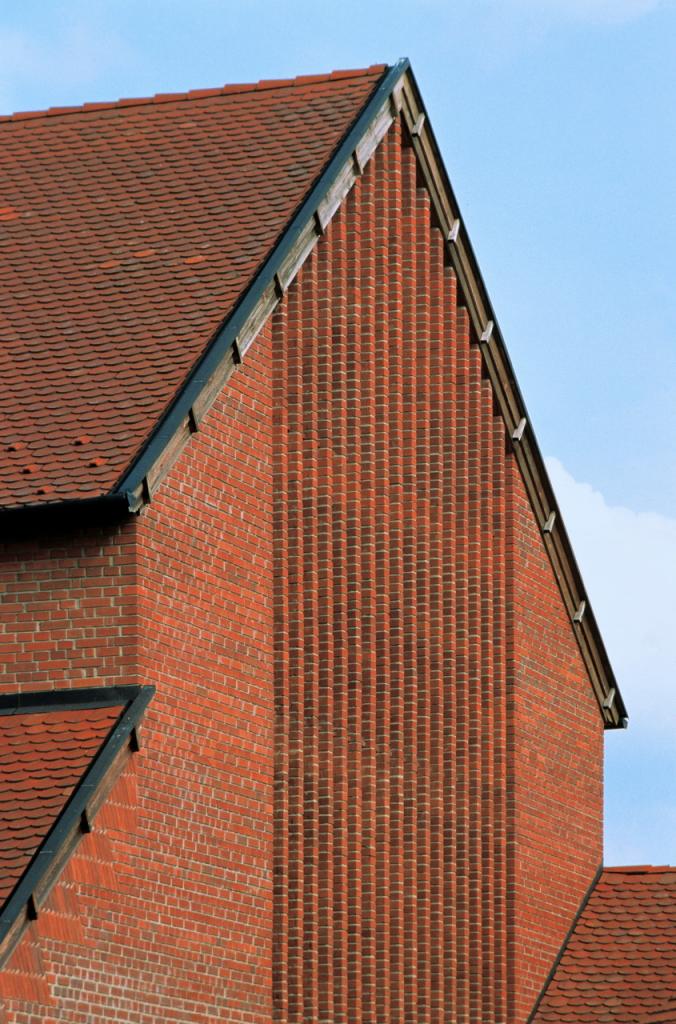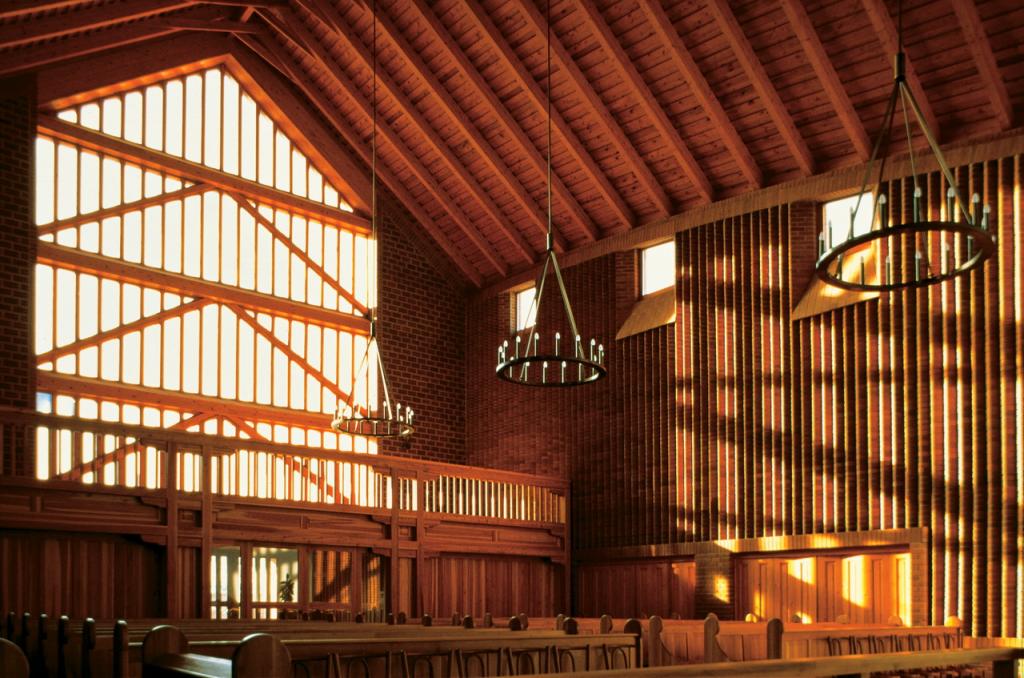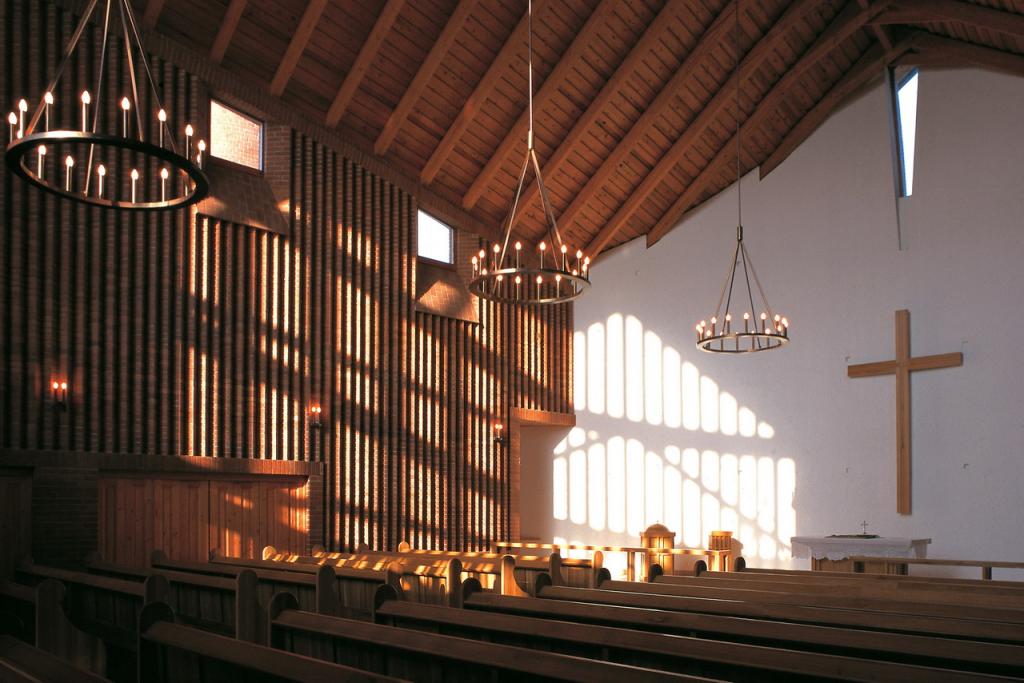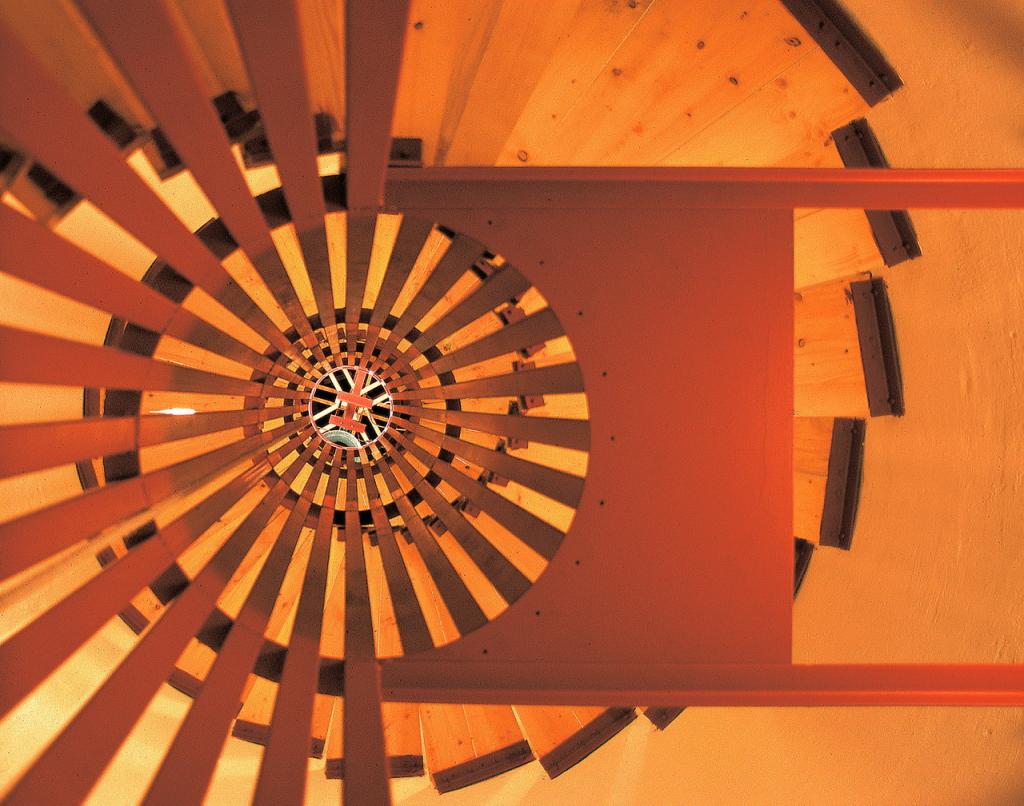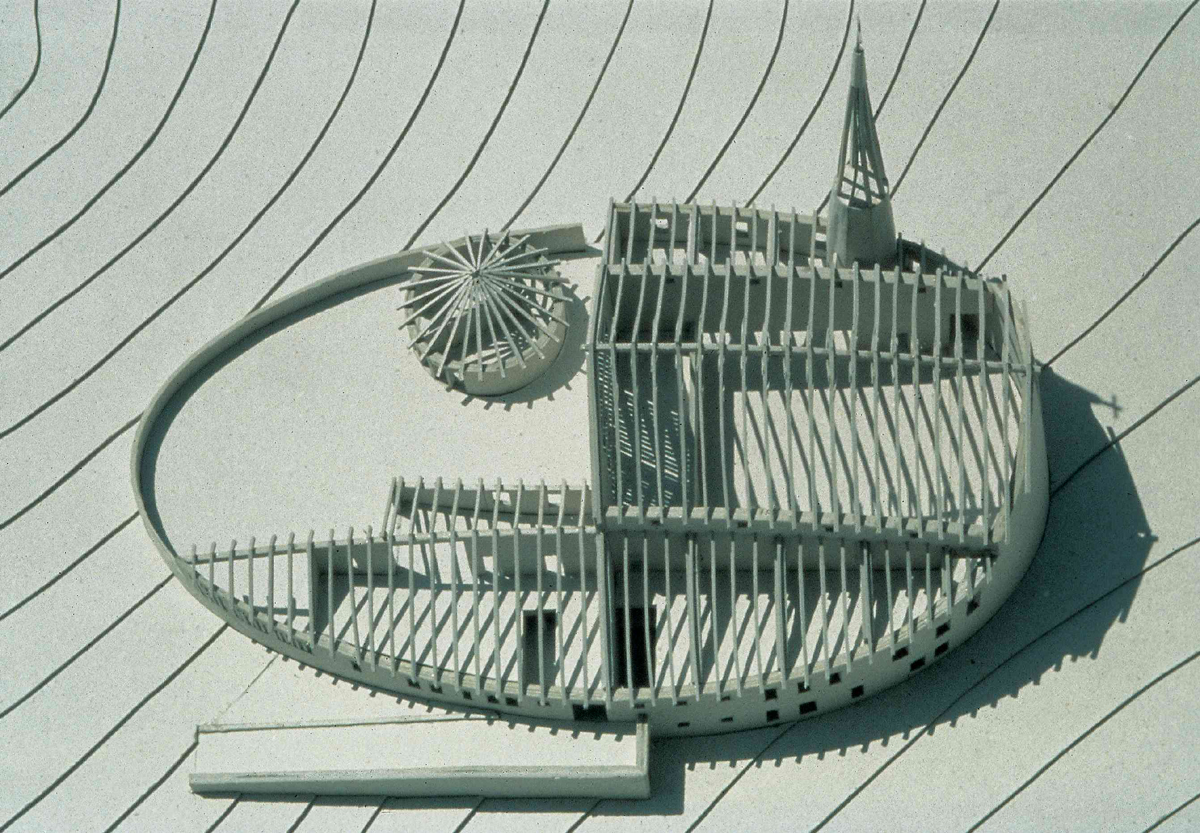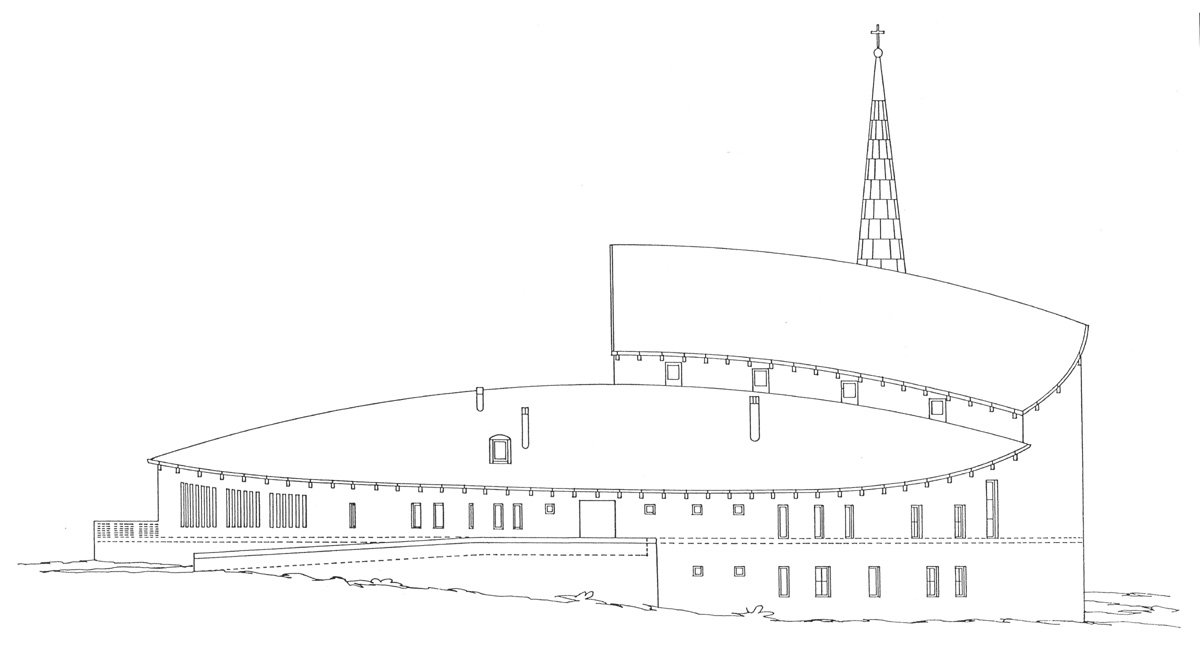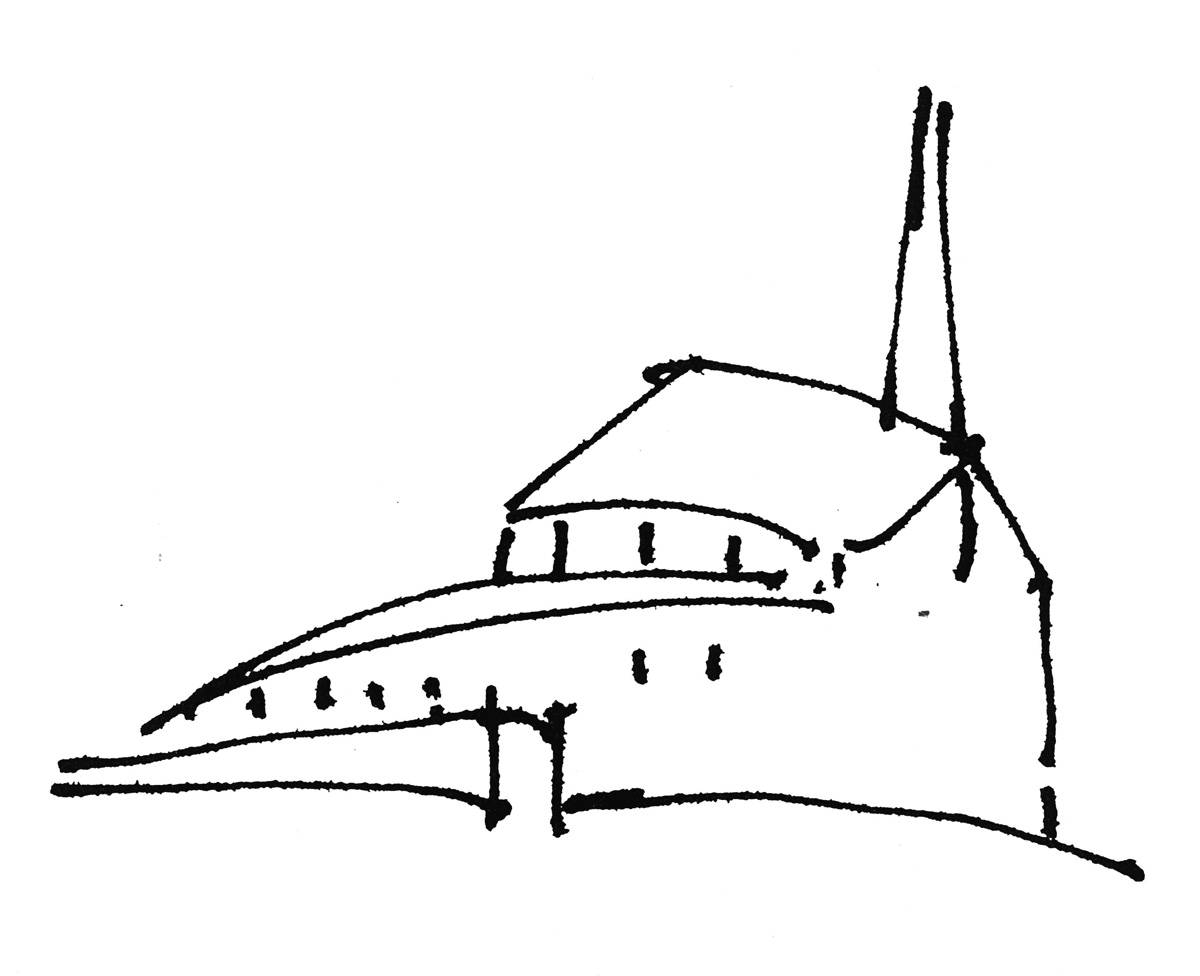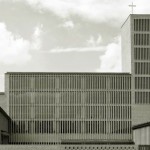"Dunaújváros is a really special work of mine. Special, because it was my first comission for a church, and special because Dunaújváros was for long decades imagined as a communist city, in which almost no place were left for religious life, so the idea of designing a church was unimagineable. After the change of the regime four denominations started to build churches, and following a competition I could desing the Lutheran church." (Tamás NAGY, architect)
- architect: Tamás NAGY
- year of design/construction: 1992-93/1992-95
- photography: © Tamás NAGY, © József HAJDÚ,
The building is related most closely to the organic school, but its volume, its form does not really follow the organic order. At the same time though the influences of the scandinavian, dutch and hungarian brick-architecture are recognisable n the building, the church itself does not follow the line of international modernism.
The church in Dunaújváros uses ancient architectural forms, but the building itself still does not use historical language – in spite of its rich system of connections (or with them) it has a real strong identity of its own. The firs impression is the main gesture: the brick enclosure, that resembles to the fortified churches in Transsylvania. This enclosure is by far not a demarcation, but a gesture of protection, secure, safety – with this one might remember the lutheran watchword „A Mighty Fortress Is Our God”.
The inner space – though does not realises, but still – invokes the main type of christian churches: the basilical space, that is a main archetype f architecture. The egg-shaped enclosure draws a kind of apse-form at the end of the nave. The axis, the apse-like closure, the three-nave-like feature refers to catholic churches, thus indirectly to a tradition when in earlier times the spaces of catholic churches were used by protestants; the unified, clear space, the usage of purist, vernacular forms, the sheer power of the raw surface of brick resembles the spirit of reformation.
The thick, simple but almost sculptural brick walls provide weight, power and dignity to the space, the organic order of space-forming is pervaded by modern racionality.
translation: Bálint MAROSI
Publications:
- Csaba Masznyik: On The Architecture of Tamás Nagy – Ferencz István, Nagy Tamás és Turányi Gábor építészete; Műcsarnok, 2002.; p. 98
- Rudolf Steger: Dunaújváros Church - in: Sacred Buildings, Birkhauser, 2008, p. 104;
- János Krähling / Gergely Domonkos Nagy: Contemporary Hungarian approaches – congregation centres - in: Church as a home – sacral and profane functions in modern Hungarian Churches, periodica polytechnica, 42/1 (2011);
- (the architect's description) Lutheran Church Dunaújváros – in: Architecture V4 1990-2008, p. 113; Kant, 2009;
Data:
- client: Lutheran congregation of Dunaújváros

